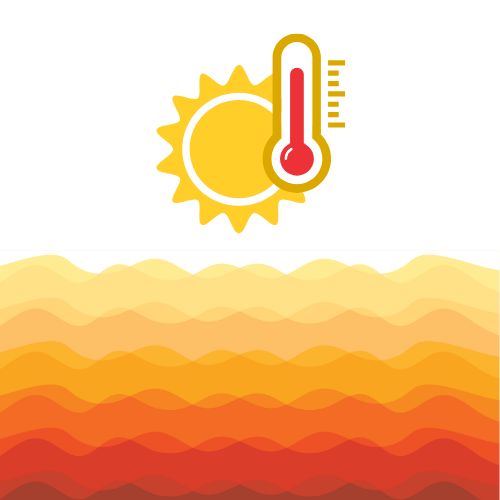In summer, when the sun shines relentlessly and temperatures soar, it seems logical to expect maximum electricity production from your solar panels. Yet many users notice a slight drop in performance during heatwaves. Why this paradox? Here's what you need to know.
Heat: A Silent Enemy of Solar Panels
Solar panels like those in the Sunflower Solar kit convert sunlight — not heat — into electricity. That’s the key point. When ambient temperatures rise above 25 °C, photovoltaic cells begin to lose efficiency. The hotter it gets, the lower the output voltage, directly impacting electricity generation.
In other words, a cloudless 35 °C day may not produce more energy than a sunny 20 °C day.
Black Panels: Stylish and Efficient… But Heat-Sensitive
Sunflower Solar panels are all-black — a sleek, modern aesthetic that also boosts performance in colder months. Their dark surface captures diffuse light more effectively, helping generate electricity even during low winter sun.
But in summer, that same dark surface absorbs more heat. As a result, cell temperatures rise quickly during a heatwave, leading to decreased performance. So even with perfect sunshine, overheating limits the panel’s energy yield.
What About the Microinverters?
Overall system performance also depends on microinverters, which convert the generated energy into usable electricity.
The microinverters used in Sunflower kits operate at 97% efficiency in ideal conditions — one of the best on the market. But like all electronics, they are affected by high temperatures. Once the ambient temperature exceeds 35 °C, microinverters can also heat up slightly, causing a further small drop in performance.
A Temporary and Manageable Effect
The combined effect — overheated panels and slightly less efficient microinverters — explains the drop in production during extreme heat. This can be surprising, especially when the sky is clear.
But there’s no reason to worry. These losses are short-term and naturally balanced out over the year. Sunflower panels outperform the average during cooler clear days. What really matters is the total annual yield — and in that respect, you still come out ahead.
Have you noticed a dip in output during the latest heatwave? Questions about your system’s performance? Reach out to our team or leave a comment below — we’re happy to help.


Delen:
Wanit and Sunflower Solar: A Belgian Partnership for Smart Water Heaters Powered by Balcony Solar Panels